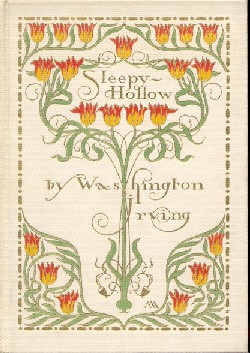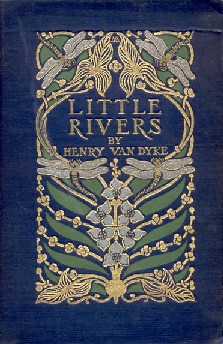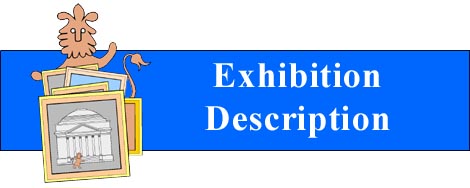
Rare Book School's holdings of Margaret Armstrong (MA) bindings have
increased slowly but significantly over the years, thanks in particular to
Margaret Armstrong The eldest of seven children, Margaret Neilson Armstrong was born in
1867 to artist David Maitland Armstrong and Helen Neilson Armstrong. The
family lived in New York for most of MA's life,
MA began working as a book designer in 1890. She displayed work at the 1893 World's Columbian Exposition in Chicago, where her cover designs won an award and a mention in Frank Linstow White's 1893 article on "Younger Women in American Art." By the early c20, she was among the best-known book designers in the country, and she was working regularly with major publishing houses in New York and Chicago. The chronological arrangement of this exhibition highlights several important trends in the design work of MA. Her earliest work shows her experimenting with styles she would later abandon, including a heavy use of silver stamping and a fondness for curling ribbons and simple, circular florals. Her later designs rely on gold stamping and highly stylized floral designs, incorporating elements first tried individually in the early bindings. 
Ford, Dunbar, and Riley MA created designs for various books written by Paul Leicester Ford, Paul Laurence Dunbar, and James Whitcomb Riley, doing not only the covers but also the interior decorations. These books were all designed over a fairly short period (1896-1902) during which MA wrestled with the problems inherent in creating decorated pages: the spatial relationship between text and border, and the contrast between the black ink of the text and the colors in the border designs. MA's two most famous series highlight her strengths as a designer. The Myrtle Reed series shows her masterly use of floral designs. The Henry Van Dyke series illustrates her keen eye for decorative detail and the emergence of her signature "stained-glass" technique, which Laurie Crichton defines as "constructing a design from myriad disjointed parts, each outlined or 'leaded' by a second color, usually gold or the color of the binding cloth itself." Armstrong's father, David Maitland Armstrong, was an accomplished stained-glass designer who worked in the 1880s with Louis Comfort Tiffany. MA occasionally helped her father outline his stained-glass designs, and her own design style often has more than something of a stained-glass look. Author and Botanist
MA's work -- particularly the floral designs in each period of her
career -- reveals her lifelong interest in botany, particularly in the
study of American wildflowers. She began to pursue this interest in
MA continued to design book covers through the mid-'20s, though after 1915 most of her work was either for her own books or continuations of series she had started at the turn of the century. In her sixties, Margaret Amstrong began a second career as a biographer and mystery novelist, publishing two well-received biographies and three mystery novels before her death at age 76 in 1944. The curator of this exhibition on Margaret Armstrong's bookbindings is Sarah Hagelin, a graduate student in the UVa English Department specializing in American literature. She is writing her dissertation on Southern women's fiction of the 1930s and 1940s. Printed Flowers: The Bookbindings of Margaret Armstrong is one of an ongoing series of Rotunda exhibitions with UVa student curators sponsored by Rare Book School (RBS), an independent non-profit educational institute, based at the University of Virginia, supporting the study of the history of books and printing and related subjects. For more information about RBS and its activities, visit the Rare Book School homepage. |
|
Email us your comments about RBS or about this web site. Last Modified: © 2005 Rare Book School at the University of Virginia |
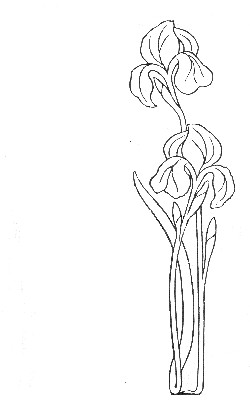
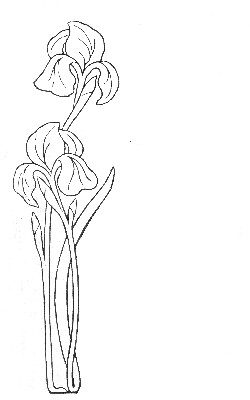
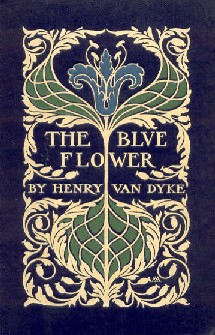
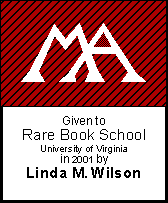 donations from Paul N. Banks, Vesta Lee Gordon, and Samuel F. "Bill"
Royall. In 2001, our MA collection doubled, thanks to the generosity of
Linda M. Wilson, who presented us with her notable collection of more than
300 Margaret Armstrong bindings. Linda Wilson's gift was especially noteworthy
because of the exceptionally fine condition of the books in her collection,
enabling a view of MA's work fairly close to what the first purchasers of
these books would have seen, more than three quarters of a century ago.
donations from Paul N. Banks, Vesta Lee Gordon, and Samuel F. "Bill"
Royall. In 2001, our MA collection doubled, thanks to the generosity of
Linda M. Wilson, who presented us with her notable collection of more than
300 Margaret Armstrong bindings. Linda Wilson's gift was especially noteworthy
because of the exceptionally fine condition of the books in her collection,
enabling a view of MA's work fairly close to what the first purchasers of
these books would have seen, more than three quarters of a century ago.